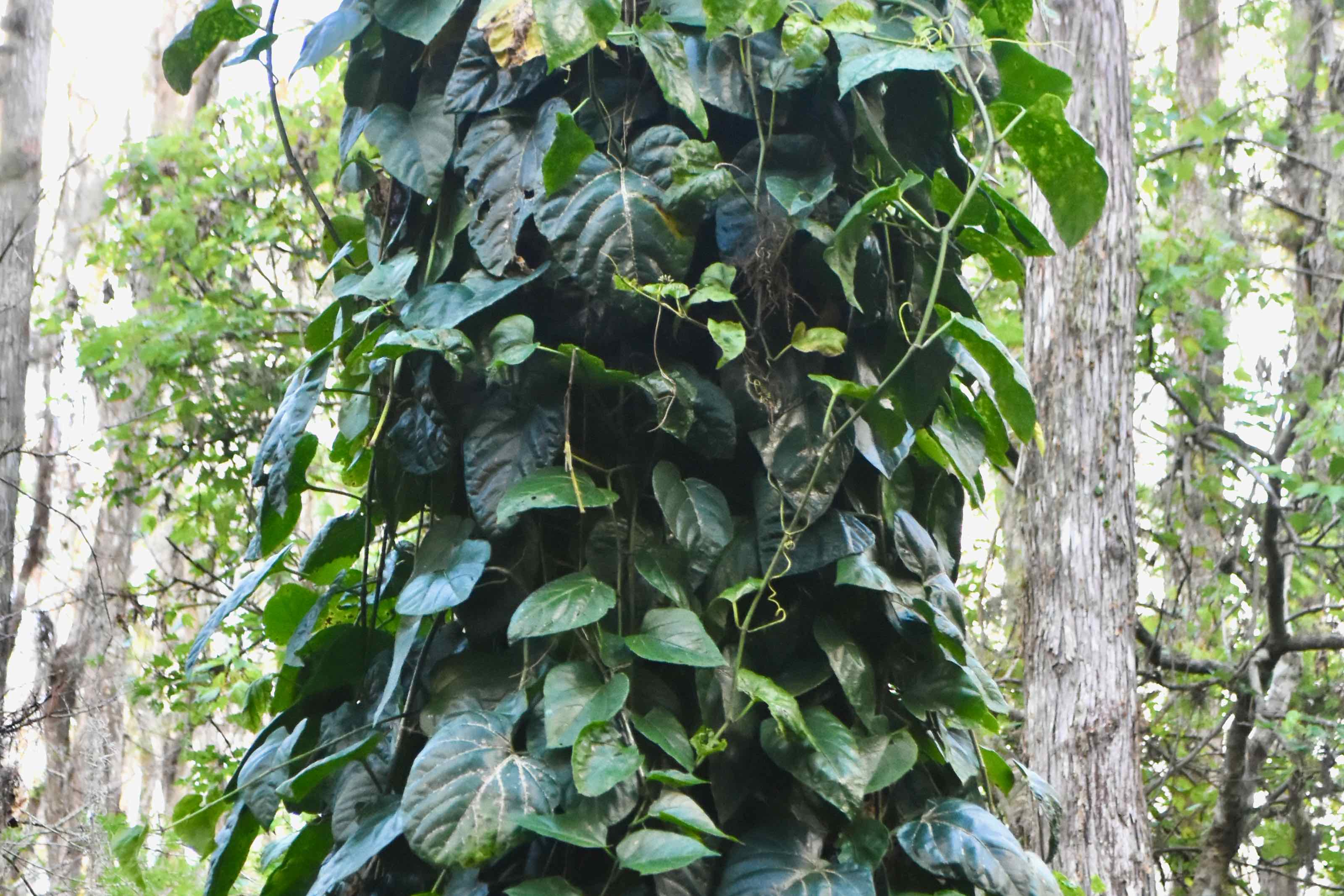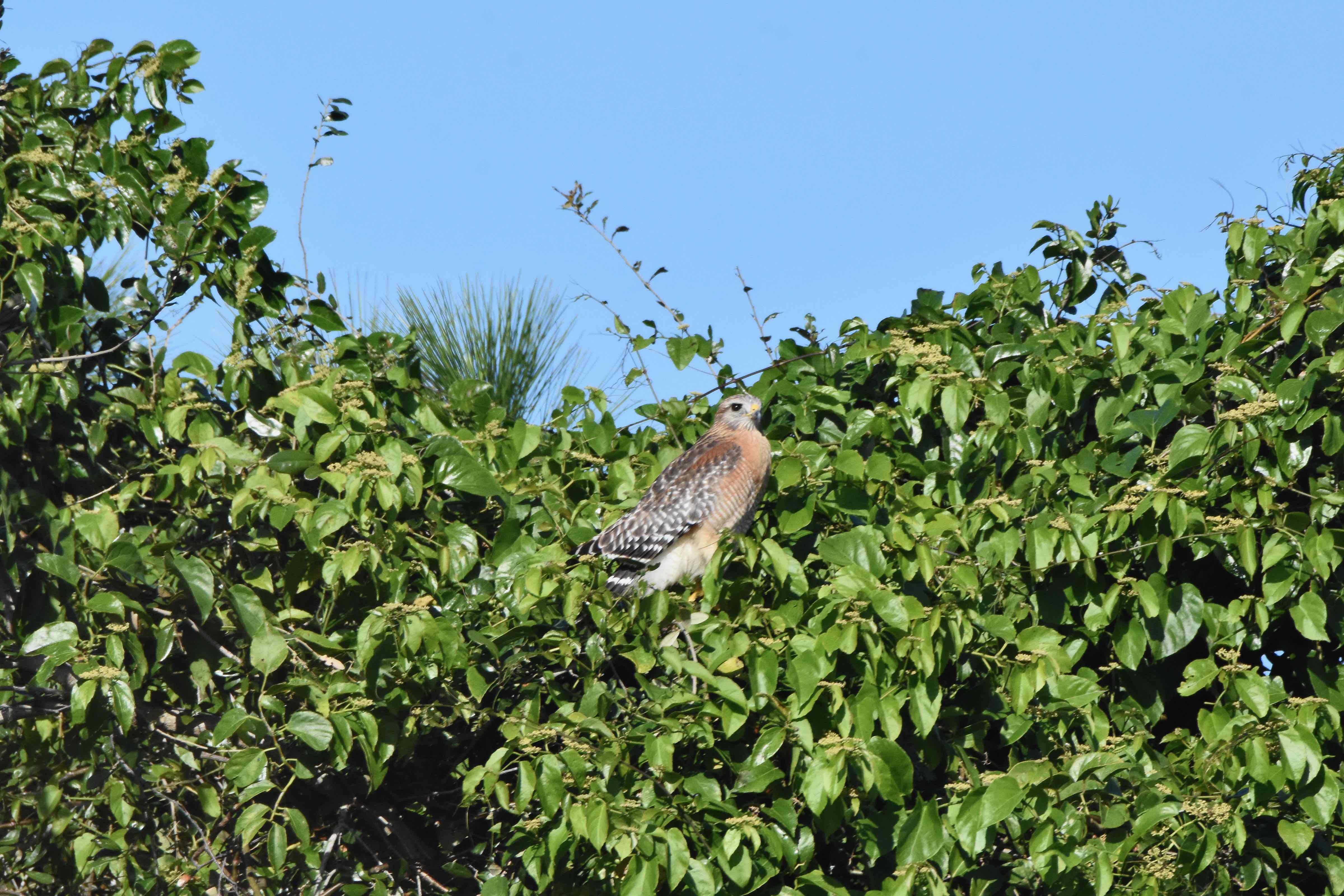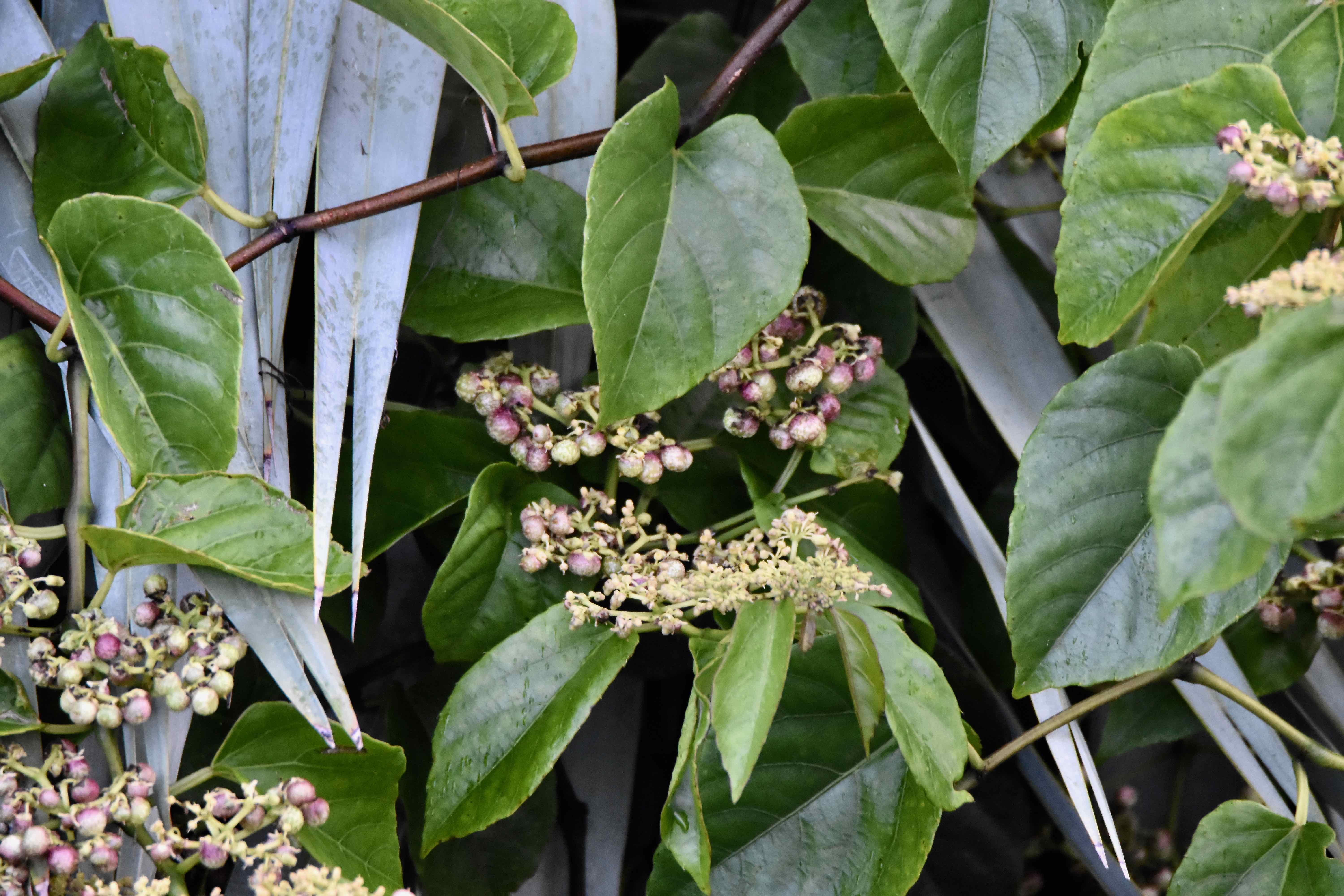
Possum-grape vine, photographed at Green Cay Nature Center, Boynton Beach, Palm Beach County, in July 2018.
One person's pest is another's pharmacological wonder. There's no better example than a Florida native called possum-grape vine, Cissus verticillata.
If you're a citrus grower in Florida, you probably don't like this plant much. If you live in Hawaii, you probably don't like this plant very much. On the other hand, if you live in South America, you might depend on it for life itself.
Possum-grape vine, also known as possum vine or possum-vine, is a Florida native found in the Peninsula south of Indian River County. It was introduced in Hawaii during the 1970s, and has come to be regarded as an invasive menace. It's native range extends throughout the Caribbean, Mexico, Central America and South America to Argentina.
The plant physically can vary greatly, but generally it can be incredibly long — one report we saw said it could reach 65 feet or more — with woody stems. It has heart-shaped, finely serrated leaves. It produces clusters of small flowers, which in turn, produce clusters of small, dark fruit, which birds eat and help distribute the seeds. It flowers and fruits year round.
Even though it is native to the Florida, possum-grape vine can be a pain in the butt to citrus growers. And it can be a headache for land managers. We've seen volunteers at Loxahatchee National Wildlife Refuge pull it off trees and shrubs in the cypress swamp to keep it from taking over.
The plant can climb to the top of the crown and envelope whole, mature trees. Not a good thing. What's worse, if you cut possum-vine at the stem, it can develop aerial roots that will find their way to the ground, reestablishing itself. You can't get rid of it. Or at least not without a lot of effort.
Humans don't consume the fruit, at least not for food. Seminoles used the vine to make bow strings and in certain ceremonies. In South America, it's much more important. Possum-vine has been a popular folk treatment for Type II diabetes, particularly in Brazil where it's considered vegetable insulin. But until a few years ago, there's been little research into how effective it might be. In 2007, researchers in Brazil did a study on rats that found a possum-vine infusion did in fact reduce blood sugar, trygylcerides and total cholesterol. The likely active ingredient: tyramine.
In 2009, Brazilian researchers studied possum-vine, this time on humans. They compared the plant with a standard diabetes drug in reducing blood sugar over 60 days. An abstract of the study is available on the National Institutes of Health website.
It's been used as an analgesic and to treat arthritis.
Possum-grape vine is a member of Vitaceae, the grape family. Other names: seasonvine, waterwithe treebine and princess vine. Also, princessvine.
Green Cay Nature Center



